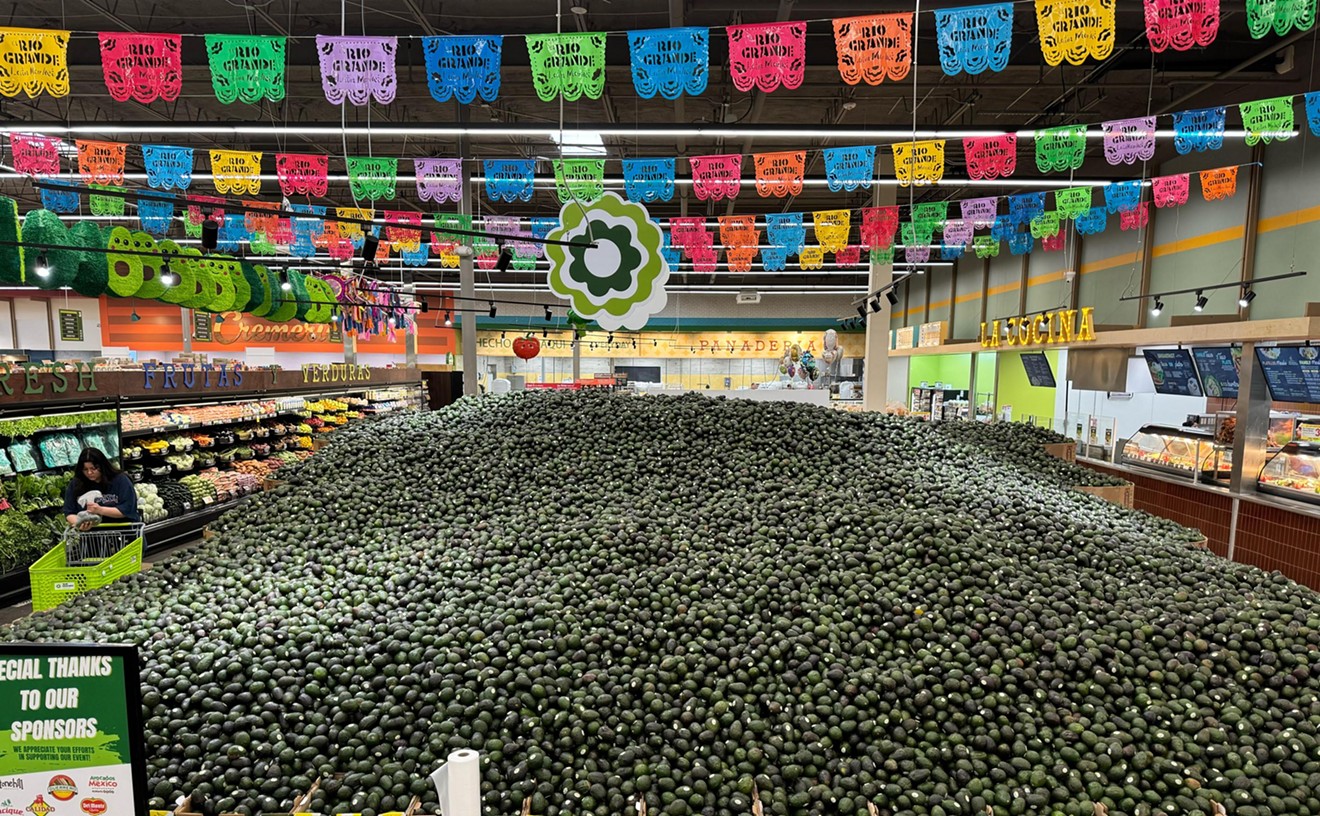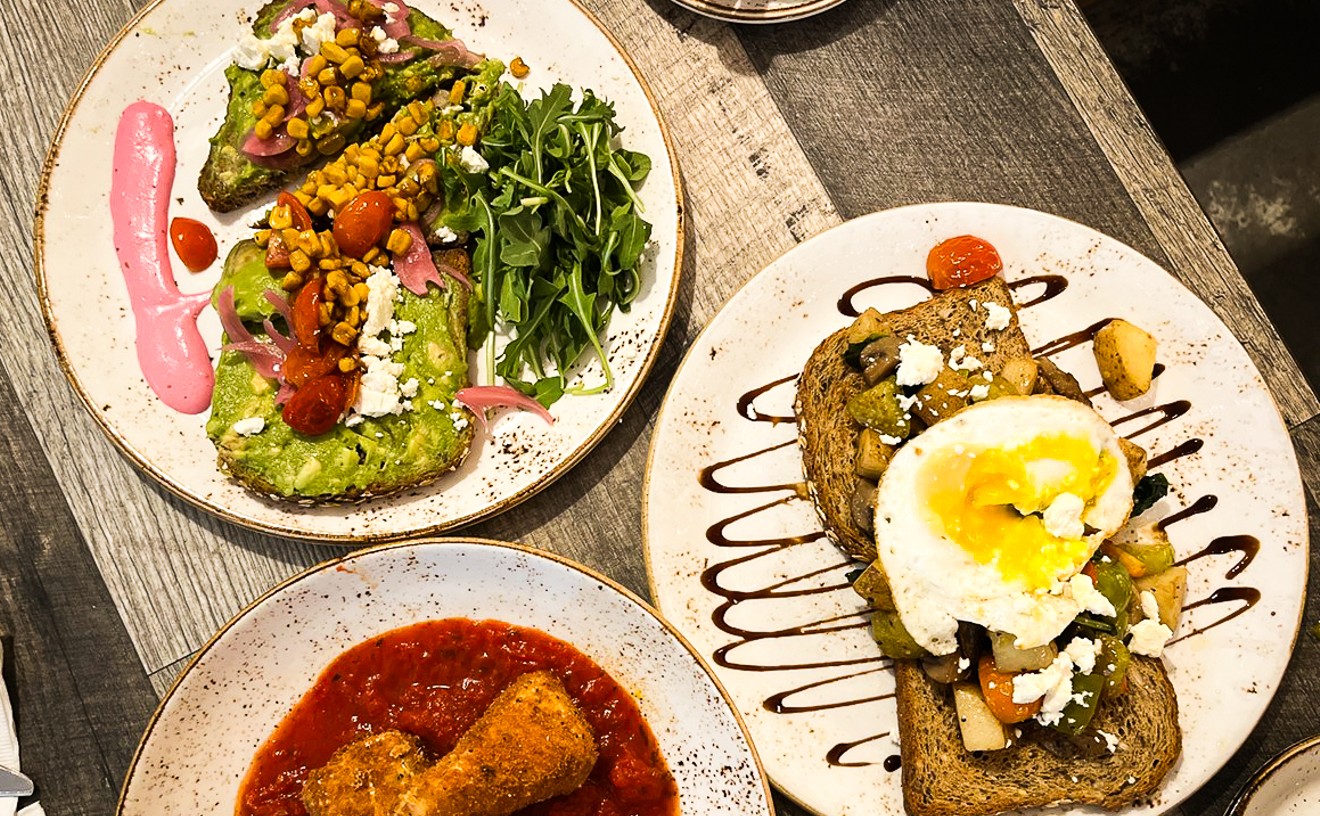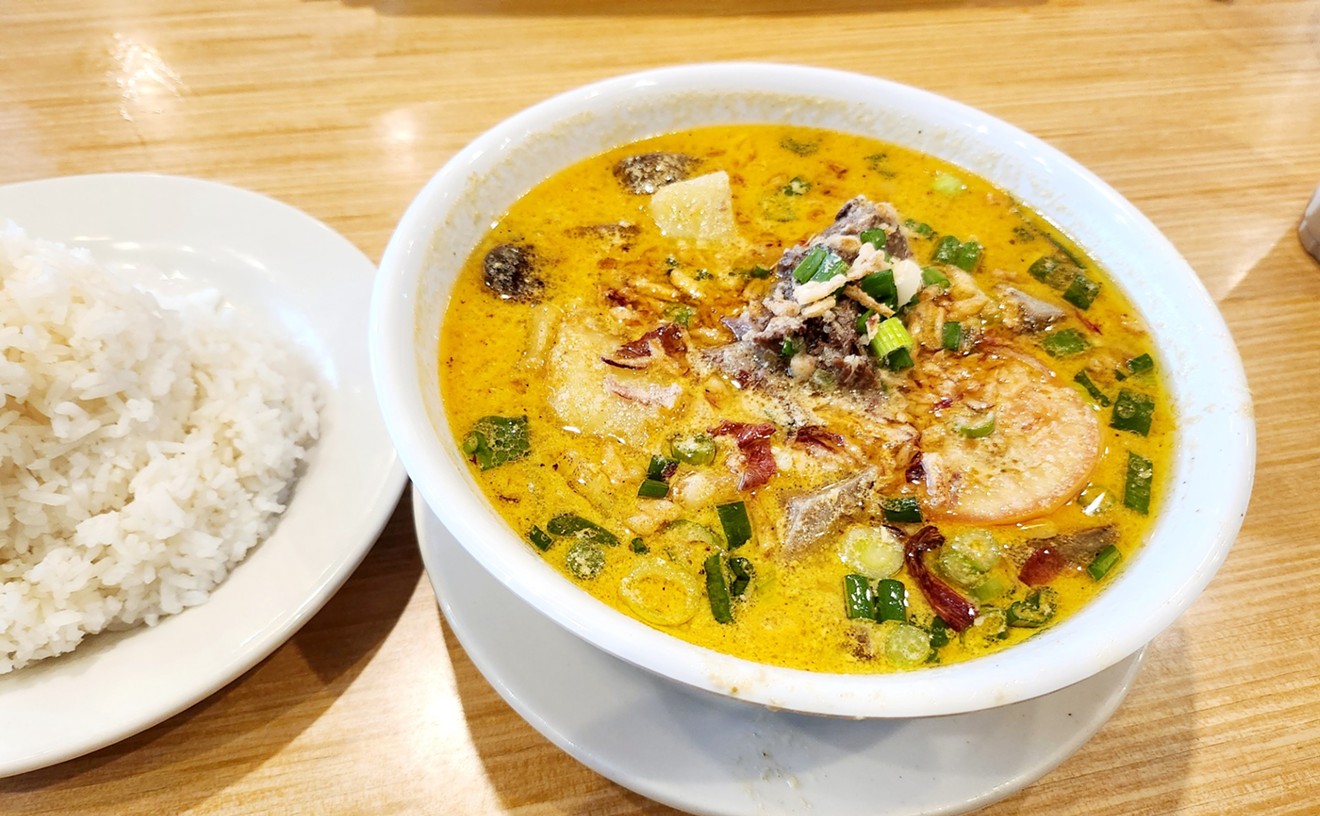After all, there's little in the scope of human history more fascinating than Russia, from its tyrannical tsars to its heinous general secretaries. It's a land of endless night, endless day, endless time zones, persistent arctic chills, if you don't count the southern reaches of the Crimean peninsula, and caviar.
Russia is loaded with jewels of human achievement illuminating its grim historical drama in works from Tolstoy, Shostakovich and filmmaker Sergei Eisenstein. Taste is a fest of Russian mystery presented in the guise of gimcracks: from meticulously hand-painted tiny jewelry, to Faberge eggs, to spy novels with snarling muscle heads brandishing Kalashnikovs on the cover, to rentable Russian films dubbed on Memorex, to vicious Soviet military cutlery that could turn a teeth-baring Doberman into a chronic bed-wetter.
Plus it has liquor-filled chocolate bars the size of buses.
Yet among this souvenir swirl, Taste manages some gripping grub, from pirogis (small Russian turnovers) to chicken fingers and fries.
There's a hand going up.
Q: Chicken fingers and french fries? How come they appear on a Russian menu? I may not know a tsar from a moped, but even I know Russian chickens don't have fingers.
A: True, true. But Taste of Europe is broad, embracing a range of cuisines: from Russian, to Eastern European, to Mediterranean, to American, to liver and onions, which no culture would dare claim. It also has a grip on every meal, from breakfast to Lent. Plus, you gotta have something for the kids because...did we mention the chocolate bars are filled with liquor?
The borscht should be. Among the soups common among Russian peasants was shchi, a broth with fresh cabbage in the summer and sauerkraut in winter, though it often served as a useful depository for whatever foodstuffs were on hand. The same is true of borscht, the pink-red broth of beets. Sometimes the two dishes are indistinguishable, when cabbage soup goes pink from the addition of beets. This is the way it is presented at Taste. One cup held a small skinned potato at the bottom, blushing from beet stains, but cabbage shreds predominated, and the flavors were thin, with nothing much breaking the bland surface tension until the spoon plumbed the bottom, which brought up peppercorns that stabbed the tongue out of its stupor.
You'd expect a Russian restaurant to dazzle you with smoked fish. The vast Russian landmass is sown and gouged with streams, rivers, lakes and seas, and its fish (and caviar) often dazzles. Shelves in the gift-shop wing of the dining room are stacked with cans of Baltic sprats, mackerel and sardines. Some cans are tall; others are flat like tuna tins, but with a much wider girth. All are labeled in dull, institutional hues. (There are even tall cans of pork with a sketch of a large hog on the label. Russia must have a critical shortage of consumer packaging focus groups.)
Fish, some smoked and some cured, is spread over plates--Nova Scotia salmon and white fish plus a white fish salad. White fish was an outage, so we were offered something different and not a little intriguing--smoked sturgeon--a thing that would take 20 minutes. The fish arrives in a delicate fog from a thin incense of sour smoke fettered to a splash of fish sauce. It's just a pair of long fillets, tubular like sausages, raked in smears of gold, cream and dark gray. The fish is warm. The flesh is juicy. The texture is rubbery and spongy. The chewing experience is unpleasant.
At its core, Taste is a conundrum of disparate elements; a place where 26-piece matryoshkas (nesting dolls) selling for $2,500 and heavy-duty military pocket watches mingle with fresh baked bread and corned beef hash--and omelettes, blintzes, burgers, BLTs, goulash, strudel and kabobs.
Shashlique or shashlik are Russian kabobs, cubes cut from "exotic" lamb chops that are marinated and skewered, grilled and served. There's no doubting their heft: The cubes are thick and burley, not cleanly cleaved. And they're dry and tough. Straight lamb kabobs are much better--exquisite in their torrid richness. Loaded with juice, the golden cubes embrace deep flavors that reach all the way into their pink centers.
Georgian dishes make a showing, too. Walnuts, aromatic herbs, garlic, vinegar and pomegranate grains mark Georgian cuisine. Yet most of these culinary baubles don't make an appearance at Taste. Georgian hinkali does. A relative of the Siberian pasta pelmeni, hinkali is a meat-filled dumpling. Or pouch. Or purse. It looks like a giant Hershey's Kiss anyway. Or perhaps it more resembles muscle-bound dim sum. When the purse is pierced with a fork, broth spills from within, a fluid that steeps ground beef grains, flecks of scallion and firm rice.
Taste's dolmas are huge and loosely assembled. The grape leaves, dark grayish green, are folded and tucked in a relaxed-fit manner, swaddling the loosely packed blend of rice and ground beef. The leaves sloughed off a sour, almost bitter flavor.
Taste of Europe, bearing a closer resemblance to a roadside diner-souvenir shop than a sophisticated trinket and noshing hole, was opened late last year by Mikhail Frumkin, who 23 years ago made his way to Dallas from Minsk, a city once nestled near the western edge of the Soviet Union but is now in the heart of the republic of Byelorussia. Frumkin operates a 3,000-square-foot warehouse from which he feeds Taste and his shop Russian Island in the Dallas Galleria with collectibles, cultural artifacts and artwork. He once operated a small cafe in Russian Island but now zeros his food lusts exclusively on Taste.
This is where he serves chicken tabaca: a split and flattened game hen rubbed with garlic and salt and seared in a skillet flooded with melted butter. It's delivered as a neatly severed pair of wings and a pair of legs with thigh attachments. It's perfect: juicy and loaded with shrill garlic flavor--not a bad thing.
Dishes come with the same sides: raw and flaccid red onions thinly sliced, and a hash called exotic rice. Though the rice was firm and separate, it was oily. But the flavor sings, fueled by aromatic spices (cardamom) and pebbled with raisins and slivers of carrot.
But salt perhaps defines the most famous dish in annals of Russian cuisine. In the late 15th century, a dry lake near Moscow contained enough of the valuable food preservative to make mineral exploiter Feodor Stroganoff and his progeny the wealthiest clan the world has ever known. By the 1600s, fueled by salt proceeds, the Stroganoffs had amassed millions of acres of Siberia, among the most valuable real estate in the world with its hefty deposits of gold, timber and iron ore. Yet the most widely known Stroganoff legacy is a simple stew: beef Stroganoff, named after 19th-century diplomat and gourmet Count Paul Stroganoff. Here the meat rests in a smooth wine-cream sauce that is delicately rich. Beef chunks have clean breeding, too: chewy and void of fatty or gristly pockets. But the dish needed more of that precious Stroganoff seasoning.
Taste has one German staple: strudel. It's transmogrified a bit with the flaky pastry sandwiching a core of apple slices embedded with whole strawberries and topped with a sheet of thick Russian cottage cheese. The firm cheese is rich with a slight tang hooking a whisper of sweetness on the finish. With a little grim bitterness, this strudel could serve as a metaphor for all things Russian.
1901 W. Pioneer Parkway, Arlington, 817-275-5530. Open 6 a.m.-9 p.m. Tuesday-Friday; open 6 a.m.-6 p.m. Sunday $-$$










